The coronavirus pandemic catalysed the temporary closure of a staggering number of educational institutions worldwide, impacting more than 1.5 billion students. Ever since, the shift toward e-learning has been rapid, with digital learning technologies quickly rendered indispensable.
Digital learning technologies are those that support the digitalisation of the learning experience, and facilitate a move online. Learning technologies, by definition, encompass any communication, information and technological tools that facilitate improved teaching, development and assessment.
Computer hardwares (such as interactive whiteboards and in-classroom tablets), softwares (spanning streaming through to gamification), and educational theories and practices (including lifelong or nano-learning), and advancements in learning technologies continue to transform our educational landscape.
Over the last decade, new technologies have become embedded into classrooms across the globe. Commonly termed ‘edtech’, this combination of new IT tools and learning modes has had undeniable impact, contributing to a more engaging, inclusive and individualised educational experience – and our progressive shift toward digital during the pandemic only served to highlight the benefits.
Ranging from the humble webinar to the comprehensive virtual classroom, to micro-courses, gamification and even augmented reality, digital learning technologies are paving the way to more affordable, accessible, flexible and student-centred approaches to training and development.
Key examples of digital learning technologies
Facilitating face-to-face, distance learning and blended learning, here are some core examples of the modes, methods and forms of technologies enhancing our workspaces and classrooms.
Mobile learning and apps
Over 80% of the world population owns a smartphone, and making use of portable devices keeps online learning agile, convenient, and extended to spaces far beyond the classroom.
Mobile learning or “m-learning” manifests in a variety of forms, from podcasts through to apps, delivering information in small chunks or ‘sessions’. Popular e-learning course provider, Udemy, is a prime example, pairing expert-led courses with assignments and interactive assessments through a designated app.
Through utilising mobile learning, employees can prepare for their first day of work without ever stepping foot on the premises – and industries like retail, hospitality and construction are making use of digital learning technologies to support onboarding, deliver compliance and product training, and monitor performance.
In the classroom, social media platforms and online tools such as Google Drive and Dropbox are being used to enable teachers and students to work synchronously (at the same time) and asynchronously (at different times) throughout the learning day.
Gamification
Gamification is a rapidly growing market, set to reach over 58 billion US dollars by 2028.
Built upon recognition and reward (two key motivating factors for both students and employees), gamification concepts embed classic gaming components and features – such as points, badges, leaderboards, timed challenges and levels – into non-gaming contexts.
Increased involvement and immersion are slated to intensify participant learning, eliciting friendly competition, enhancing social connectivity, and incentivising academic achievement.
Virtual classrooms
Learning management systems (LMS) like Moodle are designed to mimic in-person training, creating a learning experience that blends group interaction with online content delivery. From video tutorials, activities and quizzes, to breakout rooms and social spaces, virtual classrooms simulate their tangible alternatives.
Platforms like Padlet and Jamboard have become increasingly popular, fostering creative skills and collaboration between peers, with features such as concept maps, drawing and post-it notes. Flipgrid, on the other hand, is a video learning solution from Microsoft that enables teachers to see, hear and obtain live feedback from every learner in the class.
Artificial intelligence (AI)
Paving the way to a more personalised learning experience, artificial intelligence can be applied to monitor individual performance, assess the needs and interests of individual learners, and adapt to provide relevant content that supports further education.
Altitude Learning (a system part-funded by Facebook) uses AI to suggest personalised learning pathways for children, while personal digital assistants like Merlyn have been designed to help teachers tackle classroom management.
More unique examples include algorithms developed to grade papers, maximising resources and saving educators time – and softwares such as Smart Eye, which uses facial recognition technology to check if students are ‘paying attention’.
While not yet commonplace, these technologies certainly showcase the capacity of digitalisation and shed light on what our future learning environments could look like.
Emerging digital learning technology trends in 2022
New technologies continue to inform the ways in which we work and learn, and Forbes pinpoints the emerging trends of digital learning applications as those that support lifelong, immersive and nano-learning.
Lifelong learning technologies
The way we educate the students of today must continue to reflect the current employment landscape.
The rapid pace of technological advancement quickly demands that certain competencies be replaced to meet business demands. In fact, a 2018 report delivered by the World Economic Forum estimated that 54% of all jobs will require re-skilling or up-skilling – making a strong case for lifelong learning.
As such, learners need to be agile and equipped to change; no longer are students expected to train for “one job for life”. The move toward subscription service platforms, micro-courses and mobile learning apps supports this call for continued adult education.
Immersive learning technologies
With time windows and attention spans shrinking, the need for more immediate and engaging learning opportunities carves a space for extended reality technologies (XR), comprising virtual, augmented and mixed reality mediums.
Training in simulated environments fosters up-skilling, experiential knowledge and real-time feedback without cost, manpower or risk, and has been used to facilitate numerous fields of learning, from surgical procedures through to combat training.
Nano-learning technologies
Long videos are becoming less sustainable, with fast-moving social media platforms like Twitter and TikTok becoming a key source of content for many people. Today’s learning environments need to be instantaneous, modular, compelling – and possibly even habit-forming – to compete.
The case for nano-learning supports digital learning technologies like the virtual classroom and m-learning apps, delivering ultra-bite-sized lessons to be re-accessed and studied multiple times over. With text messaging services like Arist being used to deliver academic subjects, the shift toward short-form, low friction content is set to be the new normal within education.
What are the pros and cons of digital learning technologies?
As digital natives, there is a case to be made that the students of today need optimal stimulation. The implementation of digital learning technologies has far-reaching benefits, boosting engagement, motivation and social relatedness – all while catering to numerous learning styles. But is the classroom invasion also a distraction? Does it cater to our dwindling attention spans or actually exacerbate them?
Pros:
1. Going digital aids inclusive learning
Macro or micro, blended or flipped, visual or auditory – whatever the student’s learning style, digital learning technologies enable the personalisation of content delivery, meeting every individual’s needs. Remote learning creates an accessible classroom for those with physical disabilities or financial restrictions, for example, while awarding every student autonomy over their learning schedule – the flexible solution to integrate training into everyday life.
2. Improved learning experience
Not only do digital concepts like gamification foster fun, curiosity and imagination – but they also support the growing confidence of students, creating an environment where learners are free to try, fail and experiment without fear.
3. Digital learning is sustainable
Digital learning is sustainable in all senses. Technology is here to stay, and as our reliance continues to grow, it’s critical that young learners get to grips with new devices. The implementation of digital learning technologies is cost-effective, minimises physical resources (such as printed papers and worksheets), and cuts down on commuting – making it better for the environment too.
Cons:
1. Lack of social contact
Interpersonal play and physical interaction is essential to learning and social development, particularly within children. The intervention of technology adds limitations to peer-to-peer connection, which can foster feelings of loneliness and isolation.
2. It’s invasive
Bringing work into the home was essential during pandemic lockdowns, but with digital learning technologies enabling constant on-the-go training, it leaves little time for employees or students to switch off.
3. Digital learning demands other skills
Time management and self-motivation are vital components to the digital learning model – but they’re things that smaller children (and even some older students) lack. Hybrid classrooms and blended learning lessons also puts extra strain on educators, who need to exercise extra efforts and resource into creating the online content – and some teachers could be lacking in expertise.
Experience the power of digital learning first-hand
Be part of the ever-evolving learning landscape with North Wales Management School’s 100% online MA Education. This course will equip you with critical teaching essentials to engage, impact and further develop the students of today.
This degree is completely flexible and follows an asynchronous learning model, and has been designed to ensure complete flexibility, enabling students to learn at their own tempo, on their own terms.
Combining reflective practice, theoretical study and personal development, you’ll study modules spanning critical thinking, mentoring and coaching, and learning technologies, arming you with all of the tools, techniques and insights you need to further your career as an effective educator.




